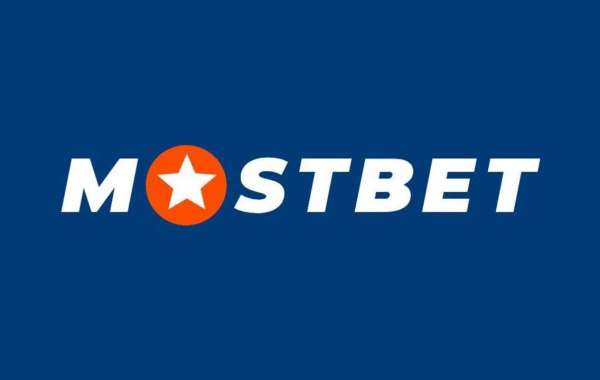Introduction: Diethylene Glycol Production Process with Cost Analysis
The Diethylene Glycol Production Process is a critical area of focus for industries involved in the manufacture of solvents, antifreeze, and various chemical intermediates. With its applications spanning across several sectors, understanding the cost dynamics of diethylene glycol (DEG) production is essential for optimizing operations and maintaining competitiveness. This report provides an in-depth analysis of the production process of diethylene glycol, including a detailed cost analysis. By exploring procurement resource assessments, market drivers, raw material requirements, and key process information, this report aims to offer valuable insights for stakeholders looking to enhance their business strategies and operational efficiencies.
Request Free Sample - https://www.procurementresource.com/production-cost-report-store/diethylene-glycol/request-sample
Procurement Resource Assessment: Diethylene Glycol Production Process
Overview of Procurement ResourcesProcurement resource assessment is crucial for understanding the cost structure and efficiency of the Diethylene Glycol Production Process. It involves evaluating the sourcing, quality, and cost of raw materials, as well as assessing supplier reliability and supply chain logistics.
- Raw Material Sourcing: The primary raw materials for diethylene glycol production include ethylene oxide and water. Sourcing these materials from reliable suppliers ensures cost stability and quality consistency.
- Supplier Evaluation: Assessing suppliers for their pricing, delivery reliability, and quality standards helps in negotiating favorable terms and ensuring a steady supply of raw materials.
- Supply Chain Logistics: Efficient management of supply chains, including transportation and storage, impacts overall production costs and operational efficiency.
- Raw Material Costs: The cost of ethylene oxide, a key feedstock, can fluctuate based on market conditions and production capacities. Effective procurement strategies involve negotiating contracts and exploring alternative suppliers to mitigate cost risks.
- Quality Assurance: Ensuring high-quality raw materials is essential for maintaining the consistency and reliability of the diethylene glycol product.
- Supply Chain Efficiency: Streamlining logistics and reducing transportation costs can significantly impact the overall cost of production.
Understanding Diethylene Glycol
What is Diethylene Glycol?Diethylene glycol (DEG) is a colorless, odorless liquid with a sweet taste, commonly used as a solvent, antifreeze, and chemical intermediate in various industrial applications. It is produced through the hydration of ethylene oxide.
Applications of Diethylene Glycol- Solvents: DEG is used as a solvent in inks, paints, and coatings.
- Antifreeze: It is a key ingredient in antifreeze formulations for automotive and industrial applications.
- Chemical Intermediates: DEG is used in the production of resins, plasticizers, and other chemicals.
- Chemical Structure: DEG is a diol with two hydroxyl groups, making it highly reactive and suitable for various chemical reactions.
- Physical Properties: It has a high boiling point and low freezing point, which makes it useful in a range of industrial applications.
Market Drivers Influencing Diethylene Glycol Production Costs
Key Market Drivers- Demand from End-Use Industries: The growth in automotive and industrial applications for antifreeze and solvents drives the demand for diethylene glycol.
- Raw Material Prices: Fluctuations in the prices of ethylene oxide and other raw materials impact the cost of diethylene glycol production.
- Technological Advancements: Innovations in production technology can lead to cost reductions and improved efficiency in DEG production.
- Regulatory Changes: Environmental regulations and safety standards can affect production processes and associated costs.
- Increased Automation: Advancements in automation technologies are enhancing production efficiency and reducing labor costs.
- Sustainability Initiatives: The push towards sustainable and eco-friendly production practices is influencing the development of greener DEG production methods.
- Global Demand: Rising demand in emerging markets is driving growth in the DEG industry, impacting production costs and supply dynamics.
Raw Materials Requirements
Ethylene Oxide- Source and Cost: Ethylene oxide is the primary feedstock for diethylene glycol production. Its cost is influenced by global supply and demand dynamics, as well as production capacities.
- Quality Standards: Ensuring the purity and quality of ethylene oxide is essential for producing high-quality diethylene glycol.
- Usage: Water is used in the hydration process of ethylene oxide to produce diethylene glycol.
- Cost Considerations: The cost of water is typically lower compared to other raw materials, but its availability and quality must be managed to avoid production issues.
Costs and Key Process Information
Production Process OverviewThe production of diethylene glycol involves the following key steps:
- Ethylene Oxide Hydration: Ethylene oxide is reacted with water in the presence of a catalyst to produce diethylene glycol.
- Purification: The crude diethylene glycol is purified to remove impurities and by-products.
- Formulation: The final product is formulated and packaged for various industrial applications.
- Raw Material Costs: Ethylene oxide and water constitute the major portion of production costs. Variations in their prices can significantly impact the overall cost.
- Energy Costs: The production process requires significant energy input, impacting operational costs.
- Labor Costs: Labor costs associated with operating and maintaining production facilities contribute to overall expenses.
- Maintenance and Overheads: Regular maintenance and overhead costs, including facility upkeep and administrative expenses, are integral to the cost structure.
- Process Optimization: Implementing process improvements and adopting advanced technologies can reduce production costs and enhance efficiency.
- Energy Management: Efficient energy use and cost-effective energy sources can help manage operational expenses.
- Quality Control: Rigorous quality control measures ensure consistent product quality and reduce waste, impacting overall cost.
Looking for an Exhaustive and Personalized Report?
For businesses seeking a comprehensive and tailored analysis of the diethylene glycol production process, including detailed cost assessments and market insights, a personalized report can provide invaluable support. Our extensive report offers a thorough examination of production costs, raw material requirements, market drivers, and efficiency measures, helping you make informed decisions and optimize your production processes.
By leveraging this report, you can gain a deeper understanding of the Diethylene Glycol Production Process, enhance your procurement strategies, and stay ahead of market trends. Whether you are looking to optimize operational efficiency or explore new business opportunities, our exhaustive and customized report will provide the insights you need to substantiate and advance your business strategies.
Conclusion
The Diethylene Glycol Production Process involves a complex interplay of raw material costs, production techniques, and market factors. By understanding these elements through detailed procurement assessments, market drivers, and cost analyses, businesses can better manage production costs and optimize their operations. Our comprehensive report offers valuable insights and personalized analysis, enabling you to navigate the complexities of diethylene glycol production and achieve operational excellence.
About Us:
Procurement Resource is an invaluable partner for businesses seeking comprehensive market research and strategic insights across a spectrum of industries. With a repository of over 500 chemicals, commodities, and utilities, updated regularly, they offer a cost-effective solution for diverse procurement needs. Their team of seasoned analysts conducts thorough research, delivering clients with up-to-date market reports, cost models, price analysis, and category insights.
By tracking prices and production costs across various goods and commodities, Procurement Resource ensures clients receive the latest and most reliable data. Collaborating with procurement teams across industries, they provide real-time facts and pioneering practices to streamline procurement processes and enable informed decision-making. Procurement Resource empowers clients to navigate complex supply chains, understand industry trends, and develop strategies for sustainable growth.
Contact Us:
Company Name: Procurement Resource
Contact Person: Amanda Williams
Email: [email protected]
Toll-Free Number: USA Canada – Phone no: +1 307 363 1045 | UK – Phone no: +44 7537 132103 | Asia-Pacific (APAC) – Phone no: +91 1203185500
Address: 30 North Gould Street, Sheridan, WY 82801, USA








